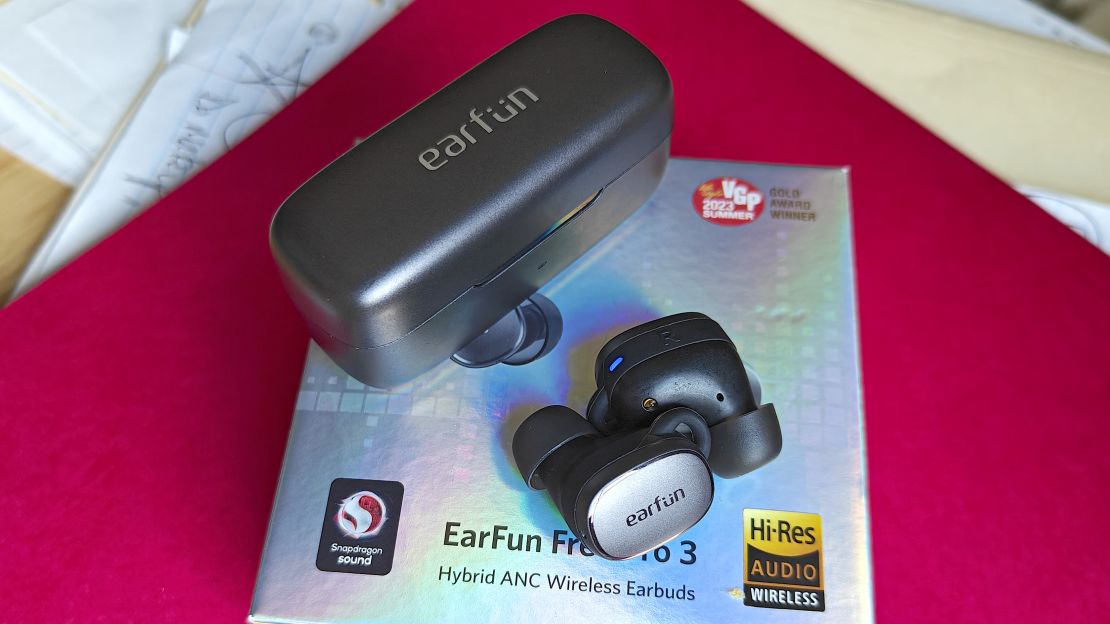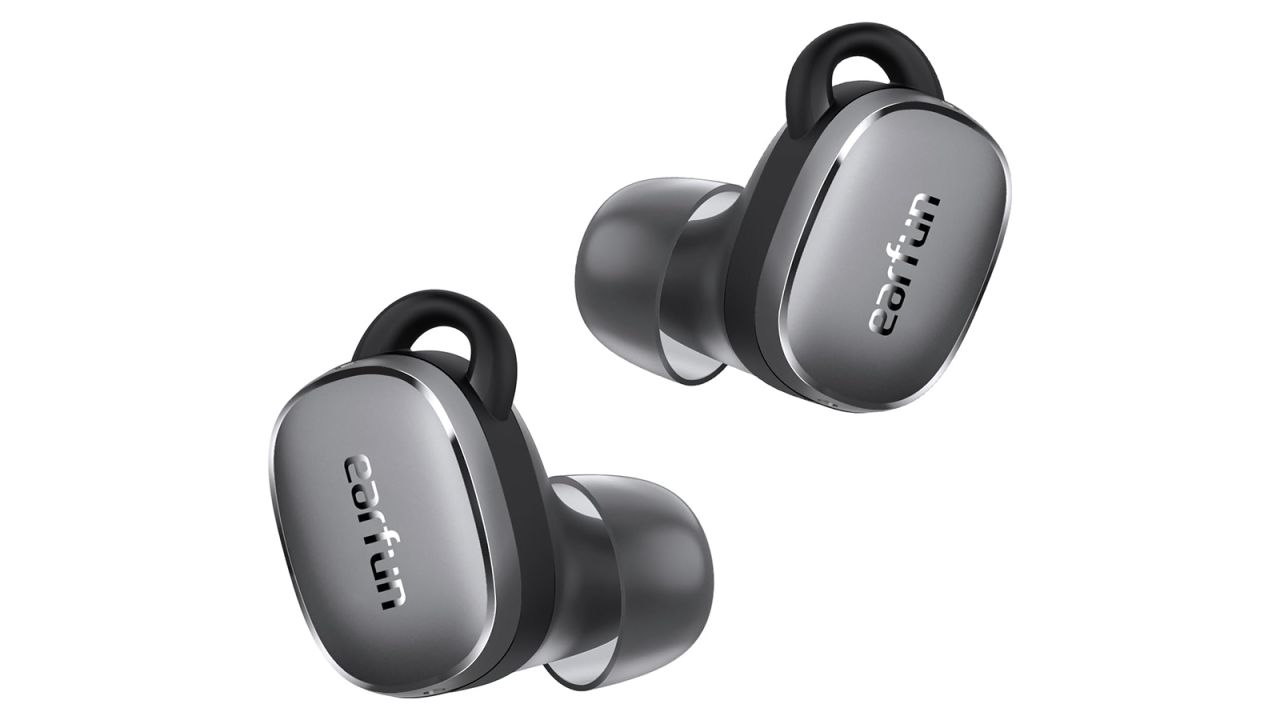Several brands come to mind when discussing the best budget earbuds. Skullcandy has been riding a wave with its Dime series, which produce satisfying sound in micro-true-wireless designs. JLab has given us some of the best headphones for running at under $30. Even luxury brands like Beats and Samsung have put out great entry-level buds via the Solo Buds and Galaxy Buds FE, respectively.
However, no one has impressed us more than EarFun. Several of the company’s releases remain top sellers, including the Free Pro 3 that packs high-end specs into a premium, highly affordable package. Joining the threequel is the recently launched Air Pro 4, EarFun’s latest flagship that replaces the Editor’s Pick Air Pro 3 and welcomes numerous upgrades across the board.
Both entries carry longer battery life and deliver better sound than the AirPods Pro 2 for a third of the price. But only one can sit on the top of the EarFun throne. View our breakdown to see which is better for 2024.
EarFun Air Pro 4 vs. EarFun Free Pro 3 at a glance
EarFun Air Pro 4 vs. EarFun Free Pro 3 at a glance
Want to spend just a little on highly effective noise-canceling buds with hi-res sound and lengthy battery life? The Air Pro 4 are the way to go. Score 30% off by checking the coupon on Amazon and applying our exclusive code (EPRO4CNN). This code is also valid on EarFun's website.
Competitive features, dynamic audio, and a sleek design make the Free Pro 3 a compelling purchase for bargain consumers. Receive 33% off these buds at Amazon or EarFun with our exclusive code EFP3CNN1.
Quick comparison
| Active noise cancellation | Yes |
Yes |
|---|---|---|
| Ambient noise | Yes |
Yes |
| Battery life (rated) | 7.5 hours (ANC on), 11 hours (ANC off), 35 hours (ANC on with charging case), 52 hours with (ANC off with charging case) |
6 hours (ANC on), 7.5 hours (ANC off), 33 hours with charging case |
| Wireless charging | Yes |
Yes |
| Fast charging | 10-minute charge = 2 hours |
10-minute charge = 2 hours |
| Sweat and water resistance | IPX5 (buds) |
IPX5 (buds) |
| Ear tip sizes | XS, S, M, L, XL |
XS, S, M, L |
| Software support | Android, iOS |
Android, iOS |
| Weight | 1.9 oz (buds + case) |
1.4 oz (buds + case) |
| Colors | Black, White |
Black, Blue, White |
Great sound quality across the board
The Air Pro 4 and Free Pro 3 sonically surpass many entries within their price points.
Being the newer release, the Air Pro 4 boast bigger drivers (10mm) and more hi-res codec support: aptX Adaptive/Lossless and LDAC. Both codecs produce lag-free streaming over Bluetooth and reveal more details in recordings at faster streaming rates. EarFun tweaked the Air Pro 4’s soundstage to extend highs, which are discernable, while dishing out boomy lows and crisp mids. The customizable EQ is useful for manually adjusting frequencies, plus the several preprogrammed presets enhance specific music genres (e.g., Blues, Latin) and sound traits (e.g., Bass Boost/Reducer, Vocal Attenuation). There’s also a My Sound Profile feature that tailors audio to your hearing and a low-latency Game Mode to stabilize audio when playing video games.

The Free Pro 3 have less-powerful drivers (7mm), yet sound terrific when listening to the best music streaming services. You’ll have access to all the same sound features as the Air Pro 4, minus LDAC and My Sound Profile. Frequency range is well balanced and complements most music genres. Qualcomm’s aptX Adaptive support dynamically scales the data range to dish out clearer and more detailed sound with minimal latency.
TL;DR: You’ll get a fantastic listening experience from both sets of buds.
The Air Pro 4 have superior ANC
The Air Pro 4 don’t have the elite noise neutralization of our overall best wireless earbuds picks like the Bose QC Ultra Earbuds or Sony WF-1000XM5, but they’re great for eliminating low and mid-frequency sounds. These EarFun buds introduce the company’s QuietSmart 3.0 Adaptive Hybrid ANC technology that automatically adjusts performance on the fly. There’s also a Balance ANC setting that improves wearability by reducing in-ear pressure. The Free Pro 3 rely on the older QuietSmart 2.0 technology that lets in a lot of unwanted noise and makes high-frequency sounds incredibly loud.
Ambient Sound mode is stronger on the Air Pro 4. Conversations sound clearer and noises are audible from afar. The Free Pro 3’s version lets you hear certain noises within your radius, but not all.
TL;DR: Place the Air Pro 4 on your ears if you want dependable distraction-free listening.
The Air Pro 4 win on features and battery life
EarFun has done a fantastic job equipping its wireless earbuds with upscale features. Here’s a list of what the Air Pro 4 and Free Pro 3 share via the EarFun Audio app: Ambient Sound/ANC, Bluetooth multipoint to pair to two devices simultaneously, control customization, a customizable EQ with presets, firmware updates, Game Mode and a Find Headphones mode. As previously mentioned, hi-res codec support is onboard and enabled through the app.

The Air Pro 4 provide more perks such as LE Audio with Auracast support and one-tap Google Fast Pair. In addition, they come with longer battery life: up to 11 hours per charge and 52 additional hours with the wireless charging case. The Free Pro 3 max out at 7.5 hours per charge and their wireless charging case holds up to 33 hours.
TL;DR: Expect loads of functionality from each pair of buds, though the Air Pro 4 have more firepower underneath their hood.
Call quality and touch controls are poor on both sides
Neither of these offerings make quality calling headsets. ANC doesn’t hold up well for blocking out unwanted background noise. Muffling is another issue that disrupts voice and video calls. The touch controls on these two sets of buds are even more disappointing. Single- and multi-tap gestures don’t always register, and the Air Pro 4’s indented circular touch panels can be difficult to locate.
TL;DR: Skip both if these categories are deal-breakers.
Bottom line
There’s more value in the EarFun Air Pro 4. An updated specs sheet with more hi-res playback options, playtime and special features wraps up this battle. Furthermore, EarFun worked hard on enhancing its ANC technology, which works extremely well on these buds and gives other similarly priced rivals like the Galaxy Buds FE a run for their money.
Don’t overlook the Free Pro 3, especially if you’re someone who desires energetic sound and reliable Bluetooth streaming on Android devices for a few dollars less than the Air Pro 4. They have a wider array of functionality than most wireless earbuds under $100 and come in a sleek design. If only their noise cancellation were more serviceable for outdoor listening.

















